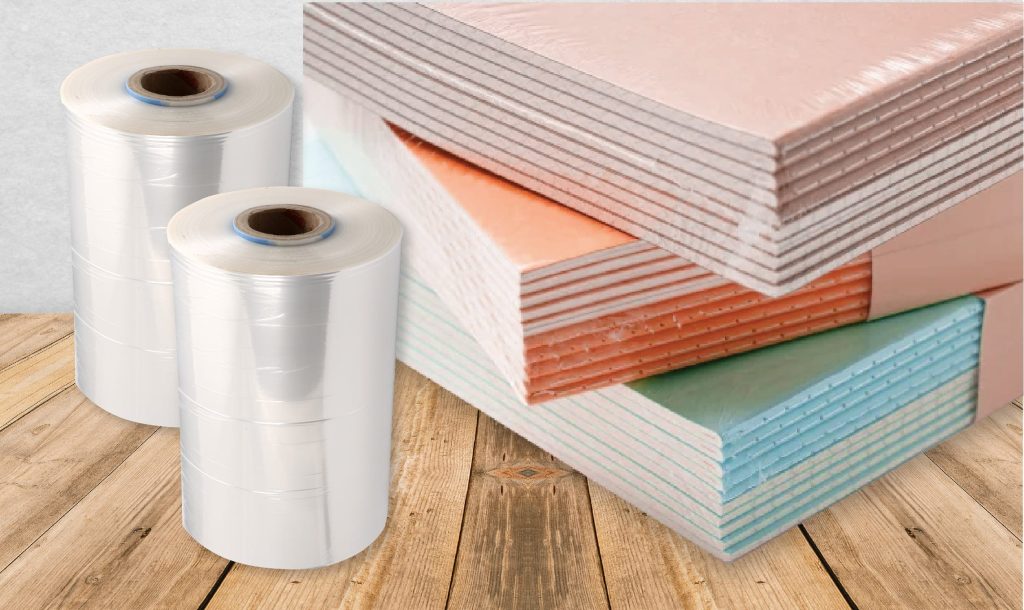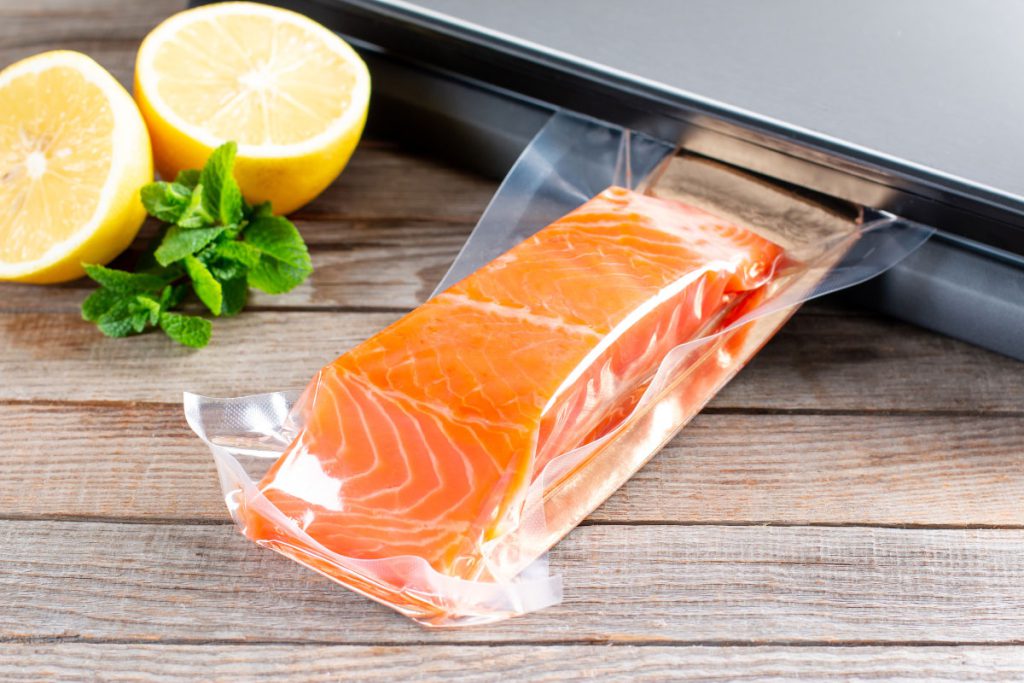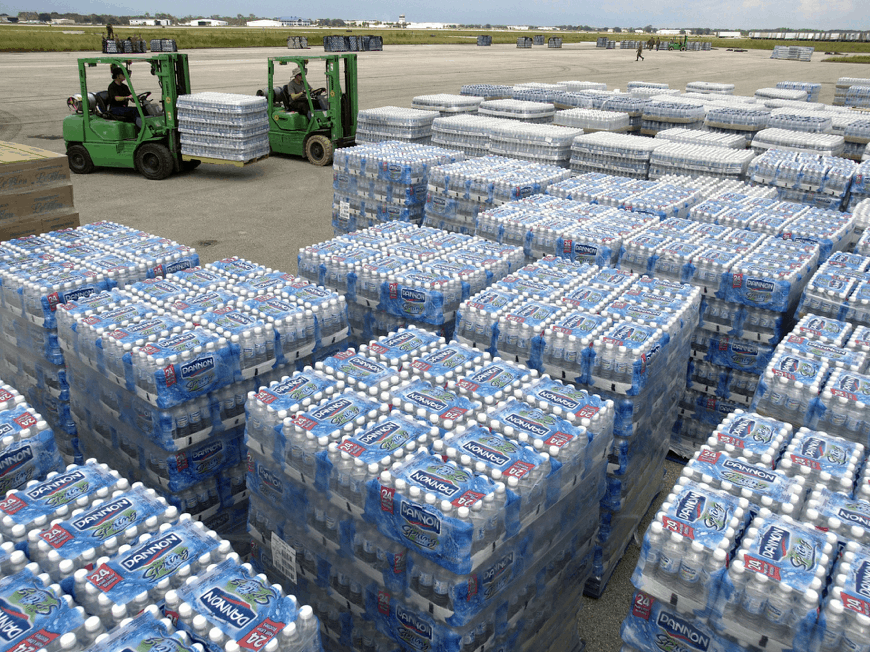When the heat is applied, shrink film, the same thing as shrink wrap, is a flexible plastic which has been generally acknowledged and used for the packaging covering of products by squeezing. The film of this kind, which is a kind of thermoplastic, is reportedly manufactured from a variety including polyolefin, polyvinyl chloride (PVC), or polyethylene polymers. It should be explained that during the last step more heat is given to the film, which means that the film becomes smaller. After that, the film is positioned on the product so that it encloses it and then the heat is applied. Thus, the film goes smaller and takes up the product’s shape that it, by itself, gives a protective and tamper-proof lock.
What Is a Shrink Film?

Shrink film is made with polymers that have been designed to shrink when heated, usually by means of a heat gun, a shrink tunnel, or an oven. The film is gently laid over or wrapped up with a product before being heated, causing it to shrink and form a tight protective layer. The amount of shrinkage is based on the film’s composition, thickness, and the method of heat application.
Shrink films are distributed in an array of shapes, with each of them being designed for a specific application. The most commonly used materials are:
- Polyolefin: A durable, versatile, and food-safe film commonly used for retail and food packaging.
- PVC: A cost-effective, clear film suitable for non-food items but less environmentally friendly due to chlorine content.
- Polyethylene: A strong, flexible film often used for bundling heavy items or large pallets.
The material of choice depends on things such as the type of product, the environmental situation or the requirements of the laws and regulations. Shrink films are also measured in microns or mils (1 mil = 25.4 microns) to indicate the thickness, where the higher the thickness, the more resistance to the breaking and the lower the thickness the clearer and flexible the film will be.
Types of Shrink Film

There are various criteria according to which shrink films can be grouped. In this text, the main types have been described:
1. Polyolefin Shrink Film
You should know that polyolefin is the leader among the most widely applied shrink films for being the most transparent, the strongest, and the most versatile. Mixing polyethylene and polypropylene has led to this type of film that seamlessly fulfills the need for a high-performance product and its high compatibility with various items.
- Characteristics: High clarity, food-safe, and recyclable, and odorless.
- Applications: Food packaging such as frozen pizzas, a wide range of retail options, and packaging multi-item packs.
- Thickness: Usually, it is from 10 to 30 microns.
2. PVC Shrink Film
It is commonly known that PVC shrink film is very cost-effective and has extremely good visibility, which makes it outstanding materials for retail displays. Though, it is not biodegradable and, therefore, not an appropriate material for the food industry since there is a risk of chemical migration happening.
- Characteristics: High gloss, brittle at low temperatures, and sensitive to heat fluctuations.
- Applications: Used for CDs and DVDs, toys, and those items that are on display and which are non-food retail.
- Thickness: Normally from 15 to 25 microns.
3. Polyethylene Shrink Film
Using polyethylene shrink film in a very high-stress environment, such as for the task of bundling oversized or massive objects, is the very apt situation for the deployment of the same. This is the film that is split into two, one being of low-density (LDPE) and the other being the linear low-density (LLDPE) form. It features the following: High flexibility and strength.
- Characteristics: High tensile quality, imperviousness to puncture, and suitability for and the ability to elongate the application to even irregular shapes.
- Applications: Pallet wrapping, beverage multipacks, and industrial bundling.
- Thickness: Varies from 25 to 100 microns or more.
Benefits of Shrink Film

The shrink film is the most widely used type of packaging in different sectors, due to the variety of its benefits. Here are the significant ones in brief:
1. Product Protection
Shrink film envelopes the products tightly that prevent them from dust, humidity, and also certainly will not allow the physical harm of the product while being carried and transported. Additionally, it is a good way of ensuring that the product is unopened.
2. Cost-Effectiveness
Shrink film is relatively small in terms of price compared to the other packaging materials like corrugated boxes or hard containers. It is even lighter than the latter that the total weight is slightly different, hence leading to lower shipping costs in the end. Also, it can package a large number of products in one go without using a large amount of packaging material.
3. Versatility
Shrink film can be made of different materials, thicknesses, and sizes, so it is possible to package all products, no matter how big or small. It is also easily used with either automatic or manual packaging systems.
4. Enhanced Visual Appeal
The film, which is thin enough and bright, will make the contents of the package clearly visible, and such kind of film is mainly used in retail stores. The film can be printed with customized designs, the company logo, product details or promotional information, etc. in these cases.
5. Space Efficiency
Shrink film that fits tightly around products reduces space lost to packaging, thereby, making storage and shelf space more efficient. Retailers and warehouses in small spaces are the ones who stand to gain the most.
Uses of Shrink Film
The versatility of PET shrink film makes it a relevant material for a lot of world applications, among all the sectors. Here are some usual applications:
1. Food Packaging
It is widely used in the food industry to pack fresh produce, frozen goods, baked products, etc. The consumers usually opt for polyolefin shrink films as they are considered safe and no harm on the food and are FDA compliant. The following are some of the examples:
- Wrapping trays of fruits and vegetables.
- Packaging frozen pizzas and ready-to-eat meals.
- Sealing cheese and meat products.
2. Retail Packaging
The retail sector benefits from the use of shrink film, which allows product display and physical product protection. It is also utilized in:
- Packaging of electronics, toys, and cosmetics.
- Creation of multipacks for promotional bundles (for example shampoo and conditioner sets).
- Wrapping of books, magazines, and stationery.
3. Industrial Bundling
These items are most of the time very heavy and/or bulky and therefore polyethylene shrink film just right for the bundling process of such items. For example:
- Beverage multipacks (e.g., water bottles, soda cans).
- Construction materials (e.g., bricks, tiles).
- Palletized goods for secured transportation.
4. Pharmaceutical Packaging
Sealing and thus protecting is the main feature by which shrink film confirms the safety and quality of the drug product until it reaches the provider and is then sold to the end user. The film is used in the safe packaging of medicine bottles, blister packs, and medical devices.
5. E-Commerce and Shipping
Shrink film is employed in the e-commerce sector for the purposes of protecting goods during the shipping process. It doesn’t only secure items but it is also a safe way to keep them in place and uses less padding material.
FAQs
1. What is shrink film?
Shrink film is a plastic material (like polyolefin or PVC) that when heated tightly shrinks around a product and hence creates a secure, protective layer.
2. What are the main types of shrink film?
Polyolefin (food-safe, versatile), PVC (clear, cost-effective), and polyethylene (durable for heavy items) are the main types.
3. What are the key benefits of shrink film?
It protects products, is cost-effective, enhances visual appeal, saves space, and offers recyclable or biodegradable options are its main benefits.
4. What is shrink film used for?
It is used in food packaging, retail products, industrial bundling, pharmaceuticals, and e-commerce shipping.
5. Is shrink film eco-friendly?
Some shrink films, such as polyolefin and biodegradable options, are recyclable or compostable, subject to the facilities available in the local area.
